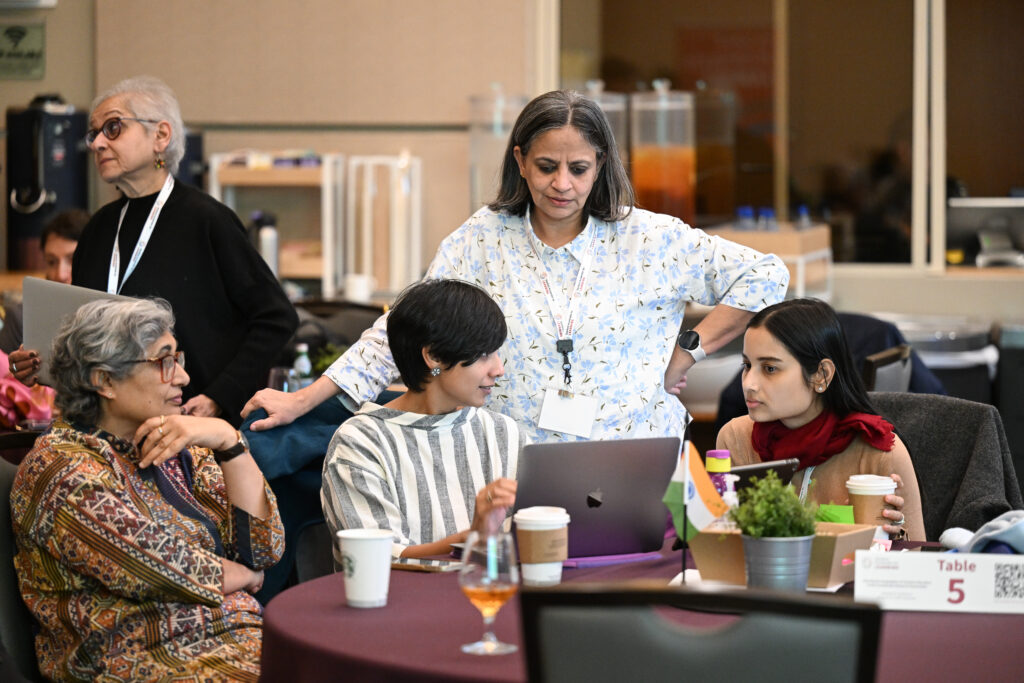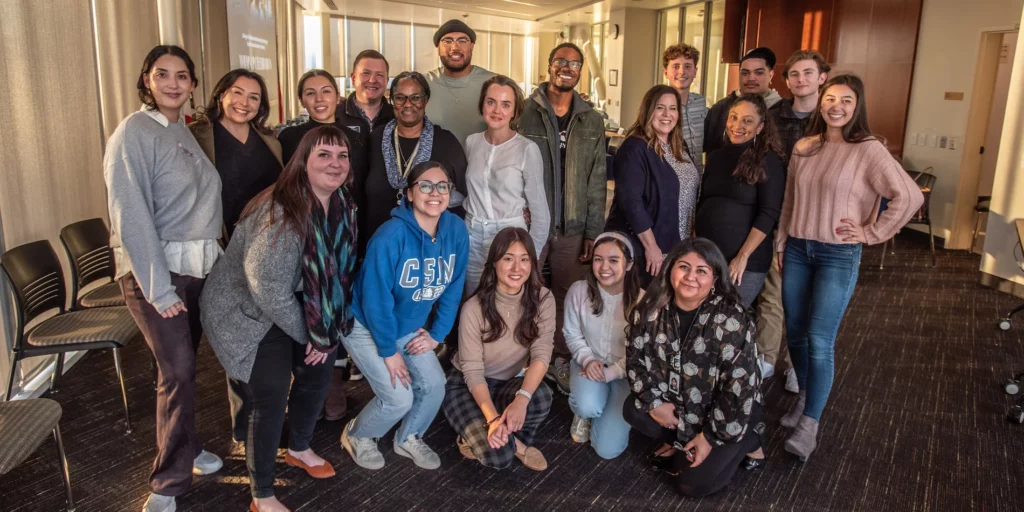When Mitchell Stevens first began to research alternative education for adults — including the development of massively open online courses, or MOOCs — the default term for someone who was studying a subject or acquiring a new skill was still “student.”
“Now we talk about learners,” said Stevens, a sociologist and professor at Stanford Graduate School of Education (GSE). “The national conversation has shifted. People recognize that learning happens in a wide range of settings, and being a student is only one relationship someone can have with learning.”
The field has come a long way, he said, when it comes to viewing education as something that takes place throughout a life and career – not as something that stops after high school or college. (People are considered “students” when they are enrolled in credentialed degree programs in schools, he said; “learners” have a wide range of relationships with many different kinds of organizations. “Working learners” are those pursuing paid employment and learning opportunities at the same time.) But there is still a long way to go.
In July, Stevens helped lead a virtual convening that drew 180 participants with relevant expertise, including academic researchers, community college leaders, philanthropists, private employers, workforce development agencies and working learners themselves. Sessions featured dialogues with learning scientists and CEOs from national nonprofits as well as regional leaders, including the chancellor of the Foothill-De Anza Community College District and the president and CEO of the San Mateo County Economic Development Association.
Stanford President Marc Tessier-Lavigne contributed to the convening’s final session, alongside Harold Martin, chancellor of the nation’s largest historically Black university.
The series, sponsored by the National Science Foundation, was held under the auspices of Stanford’s Transforming Learning Accelerator, a campus-wide initiative led by the GSE that leverages data, technology and learning science to improve instructional provision and outcomes both within and beyond conventional schools.
“This was no typical academic conference,” said Mitchell, who also co-leads the Pathways Lab at Stanford, an interdisciplinary project working to improve learning opportunities across the life course. “The very wide range of participants are people who are very rarely in the same rooms at the same time. And it truly was only possible because we did it via digital media.”
Here, Stevens talks about the convening, why it was so important and what comes next in the quest to better serve working learners.
Working learners, workforce learners, adult education – what’s the best language for this effort and this population?
What I like about the term working learners is that it gives equal emphasis to the fact that people are constantly developing new skills and that they’re also doing that either alongside paid employment or in the workplace, on the job. The people the current movement is trying to better serve are those who have a precarious relationship to well-compensated employment or postsecondary educational opportunity. They’re the people most at risk for not finishing a degree or for becoming indebted for a degree they can’t use for occupational mobility.
A participant in the convening said programs for working learners have historically been an “asterisk” to more traditional educational offerings that take place in schools for children and young adults. How do we need to rethink education to make progress in this area?
I think a major conceptual shift we need to make is that the typical learner is not necessarily a young person. The 20th century model was that learning took place in the first third of someone’s life, and that the way you improved human capital was to add more learning and formal education in the early stages.
That presumption is really hardwired into our schools, into our conceptions of the life course and into our research agendas. We have to undo all of that. People are learners over the entire arc of their lives. There is no time when the need for learning, and the pleasures it brings us, stops.
One of the things you and others at the convening have called for is more government funding in this area. There’s a lot of historical precedent for that, including the GI Bill of 1944, the National Defense Education Act of 1958, and the Higher Education Act of 1965. Why is now a time for another significant investment?
The COVID-19 pandemic exacerbated longstanding inequalities in educational opportunity – no place more so than in Silicon Valley. The amount of wealth that is currently being generated by technological transformation here is almost unfathomably large; at the same time, the lives of the people who make Silicon Valley livable — those who feed us, look after our children, maintain our homes and take care of us when we’re sick — have gotten a lot harder.
Is that sustainable? Can California continue to be a place where dreams come true? Can a democratic government flourish under current levels of inequality? I fear the answer is no. The nation needs to invest in the lifelong learning and social mobility of all its people. But that investment can’t take the same form that it did in the 20th century. Merely giving more tax dollars to sustain legacy schools in their current forms, or extending loans for people to attend existing programs, is not going to work. We need to encourage new forms of instructional provision and reconfigure legacy schools to accommodate the needs of people who will be pursuing learning, raising families, caring for loved ones and earning a living simultaneously.
What were some of the biggest takeaways from the convening?
For one thing, a recognition of the complexity of this population and its needs. How do we responsibly create lifelong learning opportunities for Americans that enable them to have a positive relationship to work over the course of their lives? That’s a national challenge.
Another is that we'll need to grow this capacity regionally because labor markets are highly variable by place, and the ecology of organizations that touch working learners varies by locale. The configuration of employers, schools, philanthropies and social service organizations in Silicon Valley is very different from the configuration of those things in Chicago or Dallas or Miami. Social scientists have a fancy term to describe this: The United States is a “distributed polity.” It essentially means that when it comes to taking care of each other, Americans tend to build local. It's a proud legacy that enables exceptionally flexible forms of social provision.
What next steps did the conference help identify for how to move things along in this field?
One next step is: How do we think about the future of work and learning here at Stanford, recognizing that Stanford is an educator, a research institution and an employer all at once?
We had people at the convening from Stanford Land, Buildings & Real Estate, from Stanford’s Residential & Dining Enterprises, from central Stanford Human Resources. Among Stanford employees, there are a great many people who face the challenges that we’re talking about: They’re trying to make a good living in a very expensive place. Are we providing enough learning and mobility opportunities for our own employees? How do we make a career at Stanford a rewarding proposition for the thousands of people who keep the university running?
How did this convening fit into the broader goals of the Transforming Learning Accelerator, which specifically identifies workforce learners as one of the populations most in need of innovation in education?
As TLA developed its mission of thinking far beyond the bounds of K-12 schools, I brought the idea of this convening to the dean of the GSE [Dan Schwartz, faculty director of TLA] as an opportunity for us to get input from people beyond Stanford, regionally and nationally. It was an opportunity to survey the landscape, to get advice and wisdom from our colleagues in the field, and to send a signal that we want to grow and learn from others about what needs we can meet.
As I see it, this all fits perfectly with Stanford’s commitment to being a purposeful university: acting thoughtfully to improve its mission as a research institution, an educational institution and an employer.



